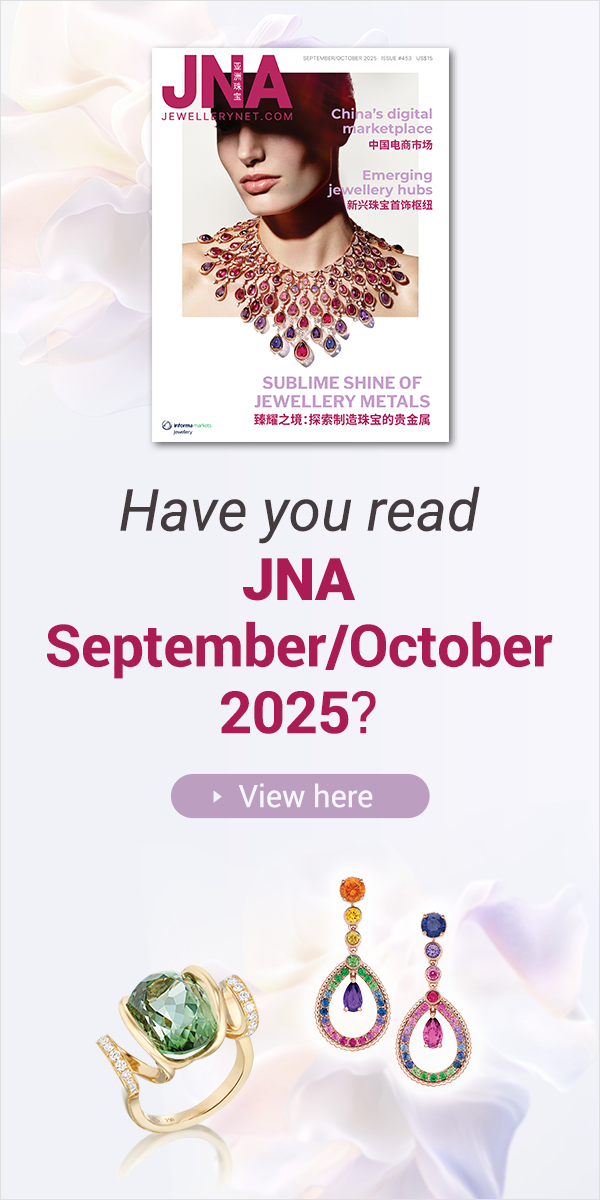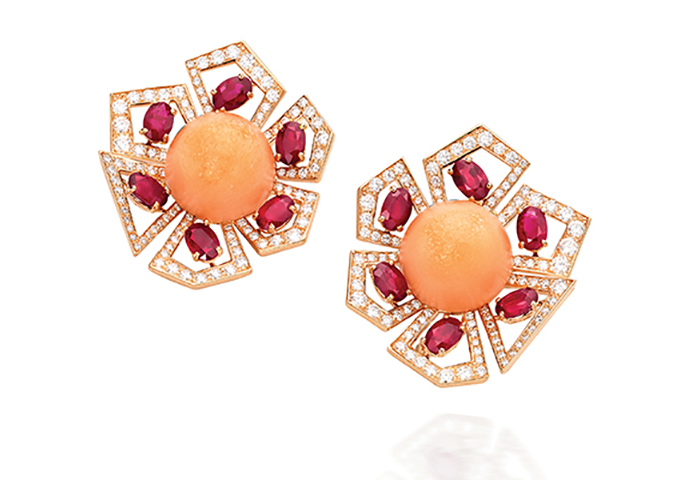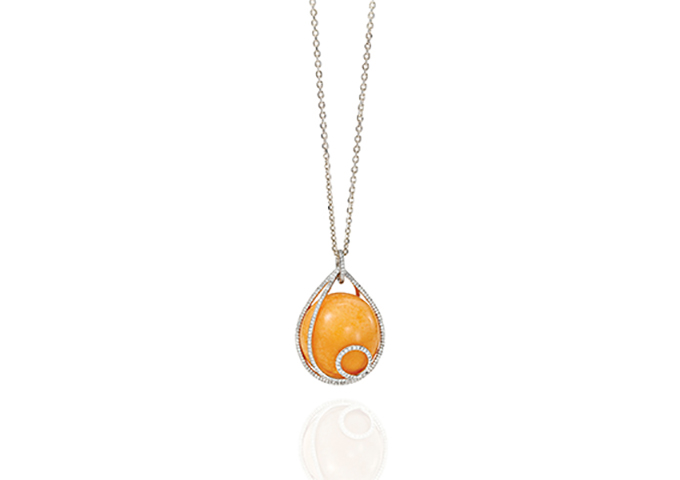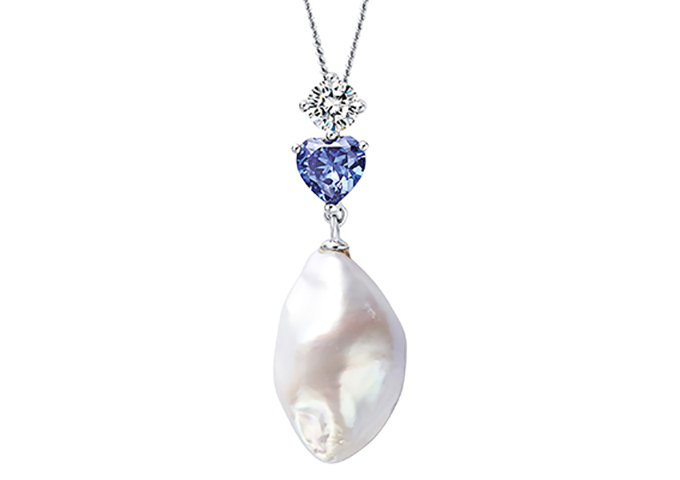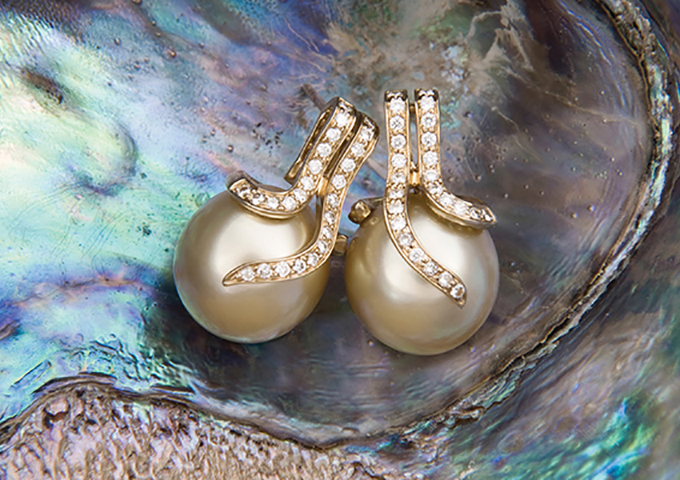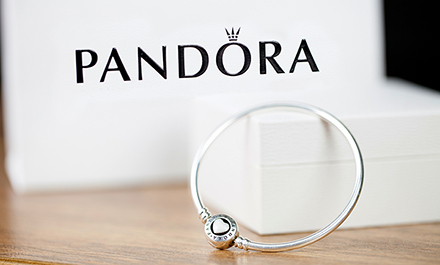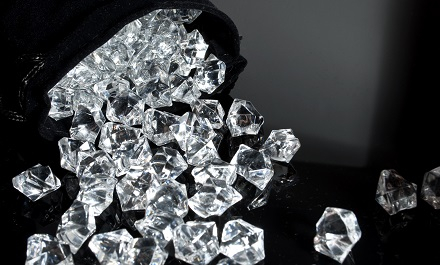Non-traditional varieties of pearls are commanding attention in the international jewellery scene, setting off innovative design trends that further elevate the pearl’s perennial allure and versatility.
Unconventional types of pearls, including conch, melo and keshi, to name a few, which differ in appearance, colour, lustre, size and shape from traditional favourites South Sea, Akoya and Tahitian pearls, are making sustained headways in the market.
These alternative pearl varieties are pushing the envelope of ingenuity in the jewellery industry, with their unique appearance injecting pearl jewellery pieces with an entirely different level of exceptionality and ethereal sophistication. Such new and innovative designs in turn promote the versatile beauty of pearls to a wider range of audiences.
According to Gemological Institute of America (GIA) Senior Manager of Pearl Identification Chunhui Zhou, both traditional and non-traditional pearls can form in a broad range of sizes, colours and shapes, but there is currently no commercial culturing practice for conch or melo, which are non-nacreous pearls – except for a few experimental ones.
“These pearls are almost always natural,” revealed Zhou. Owing to their rarity and refreshing appearance, these extraordinary gems are attracting high prices at international auctions.
In November 2012, a 1920s Cartier bracelet with conch pearls, diamonds and enamel sold for US$3.5 million at Sotheby’s Geneva – a record price for a conch pearl jewellery at auction.
Other notable auction items were a conch pearl and diamond necklace, which fetched HK$2.22 million (around US$286,160) at Christie’s Hong Kong in November 2016, and a multi-strand conch pearl and diamond necklace, which was snapped up for HK$687,500 (around US$88,600) at Phillips Hong Kong in May 2019.
Several melo pearls have also been making waves in the auction arena. An extremely rare melo pearl of 224.30 carats bearing a vivid orange hue achieved US$722,500 at a Christie’s sale in Dubai in October 2010.
Two enchanting melo pearls – weighing 105.72 carats and 130.31 carats – meanwhile sold for HK$360,000 (around US$46,404) at Christie’s Hong Kong in November 2006 and CHF 82,250 (around US$91,550) at Christie's Geneva in May 2000, respectively.
Despite encouraging signs of market interest, traders and jewellers raised the need to further educate the trade about these pearl types to help spur demand.
Pearl essentials
According to Zhou, most pearls have the same material composition, which is mainly a form of calcium carbonate called aragonite. Traditional pearls are classified as nacreous because their stacked aragonite tablets are arranged in a “brick-and-mortar” structure.
Non-nacreous pearls’ aragonite tablets meanwhile are arranged differently, giving their surface a porcelaneous sheen and a highly attractive flame-like structure.
Zhou said GIA is seeing a steady rise in the number of unique pearls being sent to the GIA lab for testing. “They seem to have become more popular in Asia in recent years,” he revealed.
Over the years, the institute has received several standout non-traditional pearls, including a round-shaped melo pearl of more than 250 carats; necklaces containing more than 100 truly remarkable conch pearls; as well as a 150-carat horse conch pearl and a 420-carat abalone pearl, among many unusual and notable specimens submitted to GIA laboratories.
“Many of the non-nacreous pearls exhibit certain characteristics that can easily be identified such as the unique pink colour found in conch pearls and the purple colour found in quahog pearls,” explained the GIA official. “Melo pearls are usually orange in colour with an attractive flame structure on the surface. At times, their sizes, shapes and even flame patterns can assist in species identification.”
Appearances however may overlap for some pearls, making detection difficult. Conch pearls can display a variety of colours besides pink, and those can be hard to separate from other types of non-nacreous pearls.
Mabe, another unconventional type of pearl, is relatively easy to identify, continued Zhou. They typically have a “seam line” placed against the shell wall as opposed to within the soft tissues, hence they are also called assembled cultured shell blister pearls.
Keshi pearls meanwhile are by-products of the culturing process, which usually exhibit irregular linear or void internal growth features under X-ray examination. According to GIA, their internal features would occasionally be difficult to see so labs would have to utilise more advanced instrumentations such as X-ray computed micro-tomography.
Of pinks and oranges
Conch pearls’ rise in prominence has been attributed to their rarity and mesmerising ultra-feminine colour.
These distinctive flamingo pink to orange hues and natural flame-like patterns make conch pearls one of the most desired gems by traders and collectors alike. Classified as non-nacreous pearls, they are produced by the Strombus Gigas or Queen Conch mollusc, which is native to the Caribbean.
These gems are exceedingly scarce, with only one in every 10,000 species producing a conch pearl. Of those, only 10 per cent are gem-quality.
Sought after for their varying shades of fiery orange, yellow or brown, melo pearls meanwhile are produced by the Indian volute, a sea snail native to Southeast Asia, according to GIA. Melo pearls are available in very large, mostly round sizes.
Legendary pearl company Assael specialises in intricately designed fine jewellery pieces with the conch and melo pearls as centre gems.
According to Peggy Grosz, senior vice president of Assael, these gems are favoured for their individuality and exceptionality, particularly for their porcelaneous surface as opposed to the lustre found in their nacreous pearl counterparts. The finest conchs reveal stunning flame patterns while melos display striking feather-like prints.
Majority of the trade however remains unfamiliar with these gems despite their growing popularity hence only collectors and connoisseurs seek them out, the pearl expert commented.
“Conch pearls are much rarer than nacreous pearls. Melo pearls are exceedingly rare, even more so than conchs. These gems are truly prized,” explained Grosz. “We would sometimes find these pearls through individual divers who approach us. We also source them from international dealers who specialise in rare, natural pearls.”
Yuji Takano, president of conch pearl specialist Kashikey Hong Kong Ltd, explained that demand for conch pearls has consistently been on the rise, especially now that buyers are gravitating more towards the unique and the unconventional.
Top-quality conch pearls with superior colour and flame have a solid following in the trade, but supply is tight, particularly for gems of 5 carats and above, resulting in high prices.
“Around 10 years ago, there were only a few who knew about conch pearls. Buyers’ interest has been increasing gradually every year, but continued education about these pearls is crucial to further stimulating demand,” noted Takano.
A conch pearl’s pink colour – further enhanced by a flame structure that gives it a smooth, silk-like appearance – makes it highly desirable among jewellery designers, manufacturers and end-consumers.
In fact, price-conscious customers who are partial to outstanding pieces would still ask for high-quality conch pearls, noted Takano.
Kashikey earlier sold an ultra-exceptional 13-carat conch pearl, which Takano said was a highlight of his 27-year career in the trade. “We have been trading many 10-carat-plus gems over the years but that 13-carat conch pearl was just impeccable,” he continued.
Takano however cited a few challenges to conch pearl trading including overfishing and natural disasters.
Grosz of Assael shared this sentiment, adding that pearl cultivation has not been possible of late. The pearl forms deep within the shell, making implanting difficult at best.
“The industry is dependent upon natural resources and we are concerned about the amount of conch molluscs being fished to hunt for these pearls,” she remarked, adding that Assael supports regulations that seek to prevent overfishing.
Unique shape
According to the World Jewellery Confederation (CIBJO), keshis are accidentally formed saltwater cultured pearls without a solid bead at the centre. Known in the trade as non-bead cultured pearls, keshis generally range in sizes greater than 1mm to 16mm but larger, very rare gems are occasionally found.
Keshi pearls differ in size and shape – from round to flat or baroque. Keshi is the Japanese word for “poppy seed,” alluding to the size of the pearls, revealed CIBJO. Bigger non-bead cultured pearls today are also referred to as keshi.
These exceptional and organic shapes infuse pearl jewellery with an edgier, more contemporary appeal, noted Tom Wan, business manager at Wing Wo Hing Jewellery Group.
Wing Wo Hing specialises in keshi pearl jewellery pieces that celebrate the gem’s distinct natural shape.
“What makes keshis special compared with other pearls is their free-form shape, which infuses a one-of-a-kind character to each jewellery piece,” shared Wan. “We could very well say there are no identical keshi pearls in nature, which adds to their appeal and desirability.”
Keshis figure a great deal in the Hong Kong-based company’s pearl jewellery collections. According to the company official, these gems are instrumental in upping the ante for pearl jewellery designs, making them trendier and more modern. This in turn has contributed to their soaring popularity.
“These gems are truly exceptional and may command very high prices, which depend on many factors such as size, quality, surface appearance, rarity and lustre, to name a few. If they are used to make earrings, the gems should match,” explained Wan.
Round pearls however are still dominating the pearl market, so most farms are focused on producing these gems. Fine keshi pearls have become harder to come by, with demand already exceeding supply. Wing Wo Hing sources its pearls from China and Japan, disclosed Wan, adding that certain keshis can be quite rare while some can be found in commercial quantities.
Nacreous pearls
• Most famous types include South Sea, Tahitian and Akoya pearls
• Shapes vary from round to irregular such as baroque
• Formed of a substance called nacre, which is secreted by an oyster mollusc and wrapped in layers over time – eventually forming a nacreous pearl
• Nacre gives nacreous pearls a refined, mesmerising glow and determines their size, shape and colour
• The thicker the nacre, the higher the lustre of the pearl
Non-nacreous pearls
• Some of the most beloved types include conch and melo pearls
• These pearls are technically categorised as calcareous concretions or porcelaneous pearls, produced by gastropods (snails), which are univalve molluscs
• Non-nacreous pearls cannot be cultivated and are almost always natural
• These are valued more for their rarity, colour, size, shape and feather- and flame-like patterns, and porcelaneous sheen



